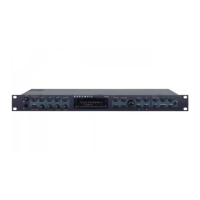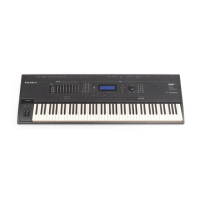I-4
Kurzweil PC2R Musician’s Guide
Index
S
Save dialog 4-4
saving
the autosplit key 3-21
effects 4-29
the internal setup 3-23
objects 4-3
quick layers and splits 3-20
scale 4-23
selecting
banks 4-36
effects 3-16, 4-28
parameters 4-7
programs and setups 3-13
setups (from your MIDI source) 4-25
sequencers 4-39
sequencers, with arpeggiator 4-35
sequences 2-5
sequences, demonstration 3-1
setting entry values 4-21
setting initial volume levels 4-19
setting key range 4-7
setup 2-1
setup controller assignments C-34–C-69
Setup Editor 4-16, 5-10
setup organization 3-12
setup structure 4-16
setups
creating 4-18
list of C-33
overview 1-1
selecting 3-13
selecting (from your MIDI source) 4-25
transposing remotely 4-26
Setups 125 through 128 4-16
Setups mode 3-2
Shift button 3-8
short cuts for editing 4-6
signal routing B-9
slaves 4-35
software upgrades 2-5, A-4
Solo button 3-7, 3-22
soloed zones 3-22
soloing and muting 4-13
soloing zones 3-21
sound ROM 1-2
sound ROM, installing A-6
sounds 1-1
special characters 4-3
special controllers B-10
special modes 3-3
special setups 4-16
specifications B-1
audio B-3
electrical B-2
environmental B-2
physical B-1
Split button 3-8
Split Layer button 3-8
splitting 3-18
startup 2-4
Store button 3-9
Store menu 5-5
storing effects 4-29
storing objects 4-3
structure of Internal-Voices programs 4-12
structure of KB3 programs 4-15
structure of setups 4-16
switch controllers 5-24
switching sounds with velocity 4-24
System Exclusive (SysEx) messages 4-5, 4-11, 5-41
recording 5-41
T
template setups 4-16
thru 2-4
Timbre menu 4-12
Timbre menu: KB3 Editor 5-6
Timbre menu: Program editor 5-2
tone controls 3-14
Transpose menu 4-7, 5-15
transposing setups remotely 4-26
transposition 4-7, 4-26
tremolo 4-31
troubleshooting 2-5, 4-40
turning autosplit on and off 4-31
U
unpacking your PC2R 1-2
upgrades 1-2, 2-5, A-1, A-4
using the arpeggiator 4-33
using the controllers on your MIDI source 3-14
V
value entry 4-6
velocity layering 4-25
Velocity menu 5-16
velocity switching 4-24
vibrato 4-31
volatile memory A-1
voltage ranges B-2
volume, entry levels 4-19
W
wet/dry mix 3-17, 4-20
Y
Yes button 3-10
Young Chang Distributors iii
Z
zone buttons 3-22
zone status 3-22
zones, key range 4-7
zones, muting 3-21
zones, soloing 3-21

